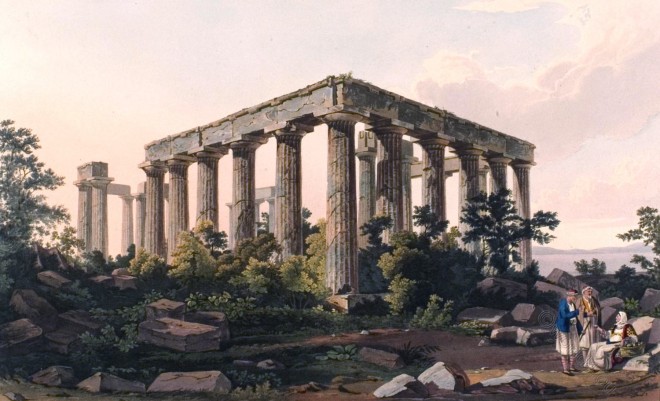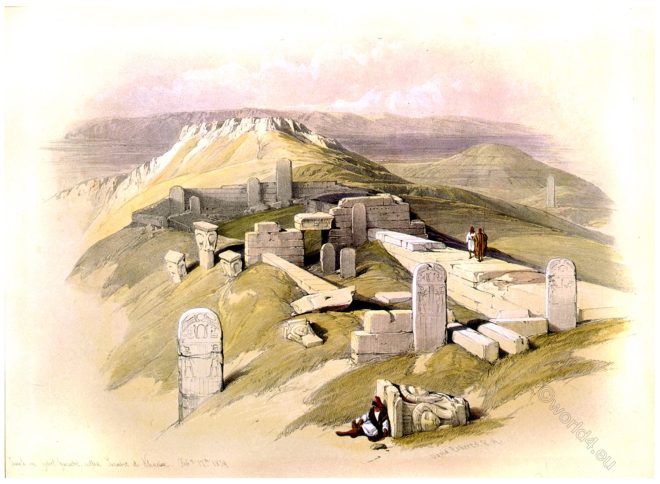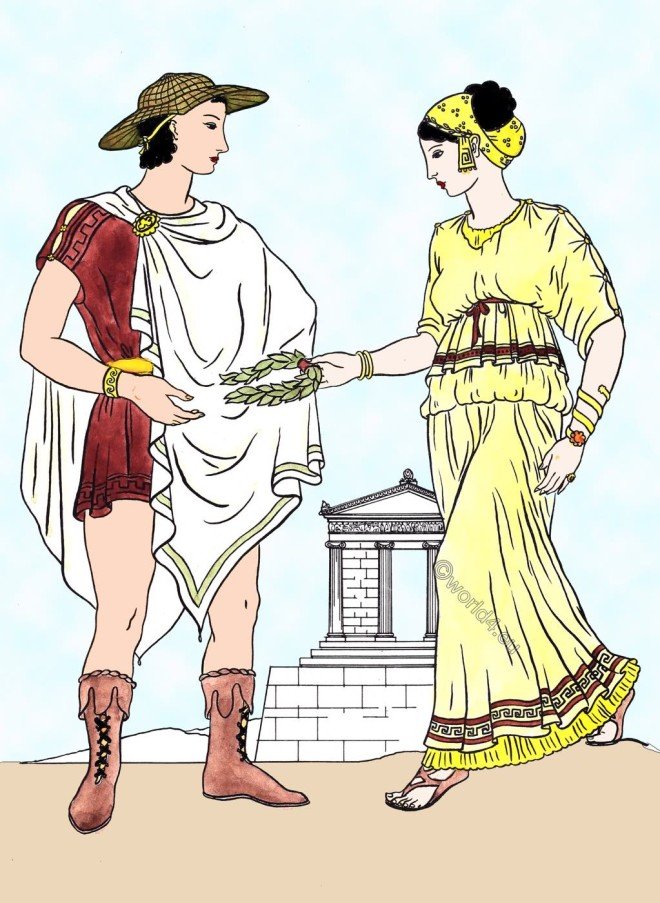A space of twenty feet in breadth, between two parallel walls, leads to the Treasury of Atreus.
Category: Ancient
The Grecian Silhouette. The Grecian chiton of the Classical period.
In the figure we see the silhouette of that costume which forms our ideal of proportion and grace of line.
Hunting scene of Sassanian Fabrics of the Middle Ages.
During the reign of the Sassanids, who ruled the Neo-Persian Empire from 250-650 AD and were distinguished by their love of luxury, the arts, especially those of weaving, reached a high level of perfection.
The Roman legionary. Reconstructed after reliefs of the Trajan’s Column.
Roman legionary. Reconstructed after reliefs of the Trajan’s Column.
The Temple of Jupiter Panhellenios in the island of Aegina.
Aegina, Greece: Temple of Aphaea. It is probably one of the most ancient temples in Greece.
An Ancient Egyptian Temple, on Gebel Garabe. Sinai, Egypt.
A view of the ancient Egyptian Temple of Hathor at Gebel Garabe, usually known as Serabit el-Khadim, in the Sinai, Egypt.
Dancing in ancient Greece. Cubistic, spheristic and stage dances.
The Greek dance usually took the form of those slow measured movements which Simonides described as “silent poetry”.
The Ionic dress in Ancient Greece.
The Ionic dress is more ornamental and richer than the Doric. This style became popular later in Greek history and was more complicated.
Decoration, taken from various periods of Greek Art.
Decoration, taken from various periods of Greek Art. Specimens of Antefix, Meanders, mosaic-work. Frieze and corona ornaments.
The transition from Doric to Ionic dress style in late ancient Greece.
Ionic dress. Compared to modern dress, it was an easy, comfortable, simple style of clothing.










